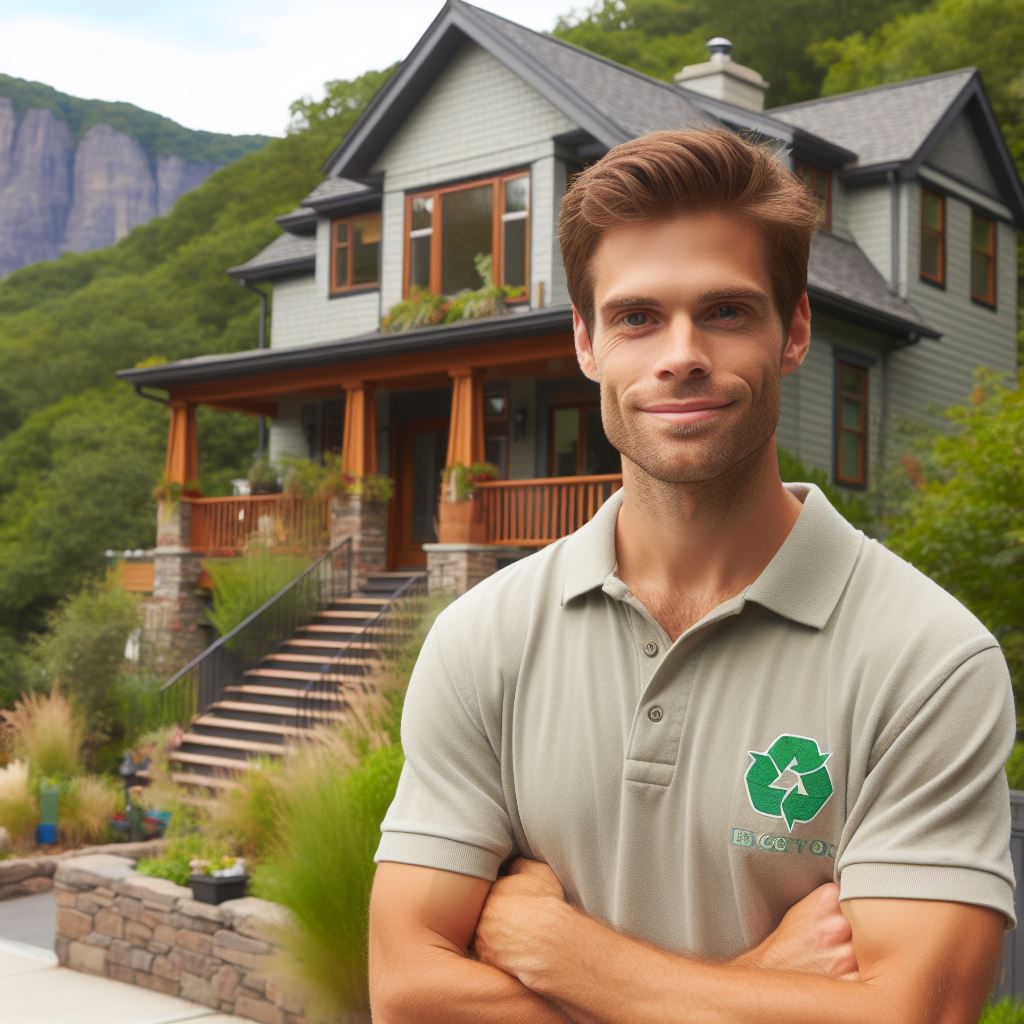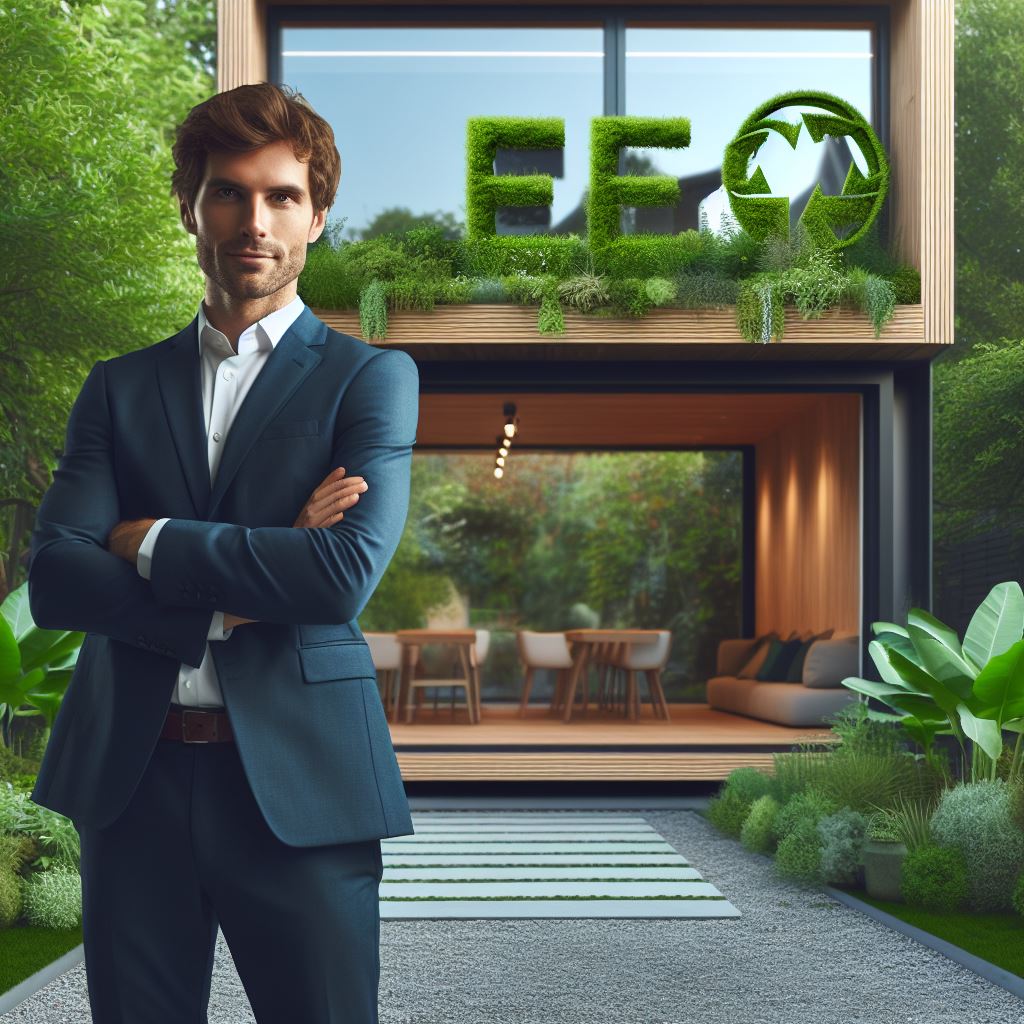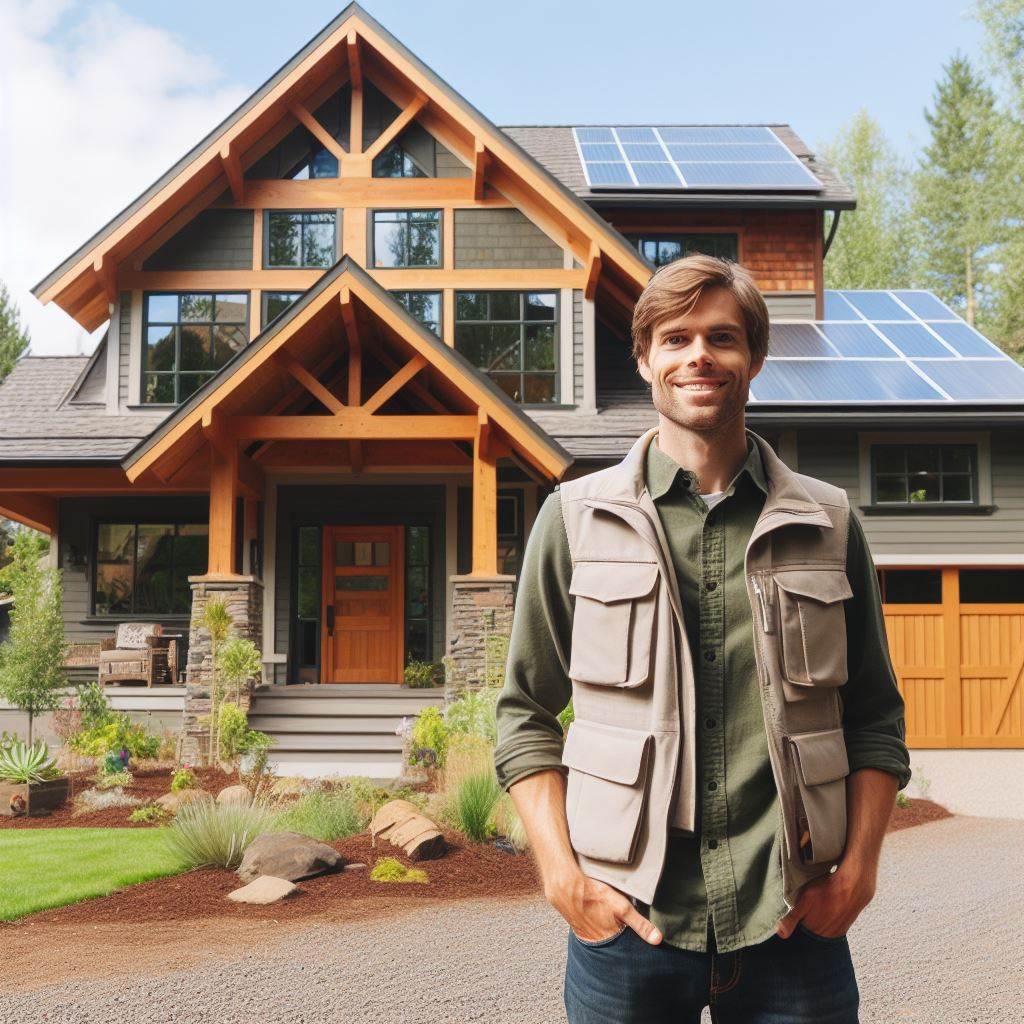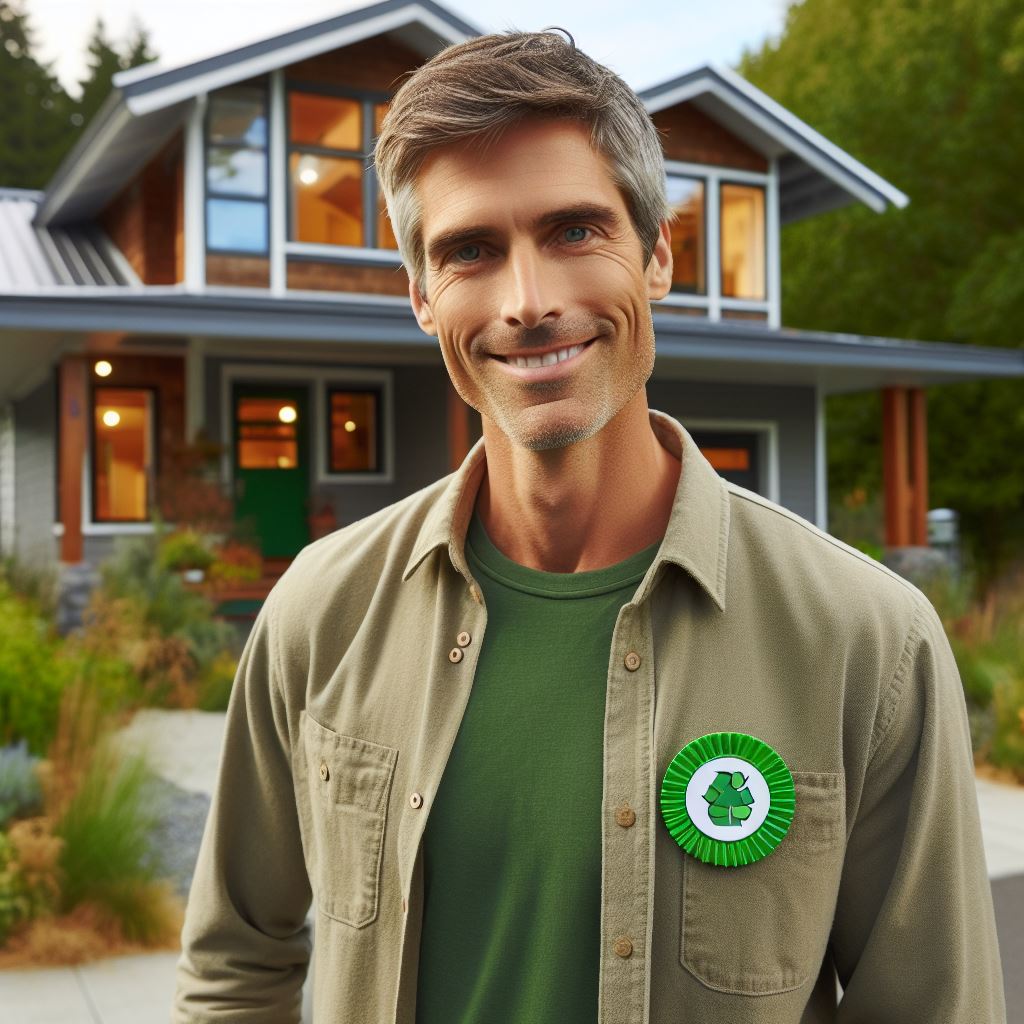Introduction
Green construction involves the implementation of eco-friendly building practices, aiming to minimize environmental impact throughout the entire construction process and the lifecycle of the building.
This encompasses various strategies such as using sustainable materials, employing energy-efficient designs, and integrating renewable energy sources.
By prioritizing environmental sustainability, green construction contributes to reducing carbon emissions, conserving natural resources, and promoting healthier living environments for occupants.
Colorado has emerged as a hub for sustainable development, with a growing interest in green construction practices.
The state’s stunning landscapes, diverse ecosystems, and outdoor recreational opportunities underscore the importance of preserving its natural environment.
Consequently, there has been a significant shift towards embracing sustainable building techniques, driven by a collective commitment to environmental stewardship and responsible urban development.
Colorado’s unique blend of environmental consciousness and economic vitality has fostered a fertile ground for innovative approaches to green construction, attracting attention and investment from both local stakeholders and the broader sustainable building community.
Understanding Colorado’s focus on green construction is essential for appreciating its significance on multiple levels.
Beyond the immediate environmental benefits, such as reducing carbon footprint and conserving water and energy resources, green construction plays a pivotal role in fostering resilience against climate change impacts.
By integrating sustainable practices into urban planning and infrastructure development, Colorado is positioning itself to thrive in a rapidly changing climate while enhancing the quality of life for its residents.
Furthermore, Colorado’s commitment to green construction serves as a model for other regions grappling with similar environmental challenges, offering valuable insights and best practices for sustainable development on a global scale.
Exploring Colorado’s dedication to green construction is not only a testament to its progressive ethos but also a catalyst for driving positive change towards a more sustainable and resilient future.
Government Initiatives
Overview of state and local government policies promoting green construction
Colorado has implemented various policies that encourage and support the adoption of green construction practices.
The state government has set ambitious goals and targets to reduce carbon emissions and promote sustainability.
Local governments have also taken initiatives to develop green building codes and regulations.
These policies aim to ensure that construction projects adhere to environmentally-friendly and energy-efficient practices.
Government agencies provide support and resources to educate and guide builders and developers in implementing green construction techniques.
Tax incentives and rebates for green building projects
Colorado offers tax incentives and rebates to promote green building projects and investments.
Builders and developers can receive tax credits or deductions for incorporating energy-efficient systems and materials.
These incentives help reduce the upfront costs of green construction, making it more financially viable for the industry.
Rebates are provided for installing renewable energy systems like solar panels or geothermal heating and cooling systems.
Government initiatives aim to make green building financially advantageous, thereby encouraging widespread adoption in the construction sector.
Successful government-led sustainable development initiatives in Colorado
- The Energy Smart Colorado program offers energy assessments and rebates to homeowners and businesses for energy-saving upgrades.
- The Colorado Green Building Guild provides training and certifications for professionals in the green construction industry.
- The City of Denver established a Sustainable Development Task Force to promote environmental stewardship and encourage sustainable building practices.
- The state-funded Sustainable Main Street program supports municipalities in revitalizing downtown areas with environmentally-friendly design principles.
- The Colorado Energy Office collaborates with utilities to offer energy efficiency programs and incentives to reduce energy consumption.
Colorado’s government initiatives play a crucial role in promoting green construction and sustainable development in the state.
Through policies promoting environmentally-friendly practices, tax incentives, and successful programs, the government encourages builders and developers to adopt green building strategies.
These initiatives not only benefit the environment but also create economic opportunities and improve the quality of life for Colorado residents.
As the new wave of green construction continues to grow, the state’s commitment to sustainability sets an example for other regions to follow.
Read: Philadelphia Market: Historical Home Profits
Benefits of Green Construction
Environmental advantages
- Green construction practices help to minimize the negative impact on the environment.
- By using recycled and sustainable materials, it reduces the carbon footprint of buildings.
- Efficient use of resources like water and energy promotes conservation and reduces waste.
- Implementation of green construction techniques contributes to the preservation of natural resources.
- Conservation of forests and ecosystems is achieved through the use of eco-friendly building materials.
Economic benefits
- Green buildings are highly energy-efficient, resulting in significant savings in energy costs.
- Investing in green construction can lead to long-term financial savings for building owners.
- Green buildings have higher market value and attract eco-conscious buyers or tenants.
- Government incentives and tax benefits are offered to encourage green construction projects.
- Decreased maintenance and operating expenses contribute to the economic viability of green buildings.
Health and wellness advantages for residents and occupants of green buildings
- Improved indoor air quality, due to the use of non-toxic materials and better ventilation systems.
- Green buildings prioritize natural lighting, which positively impacts occupants’ mental well-being.
- The design and layout of green buildings promote physical activity and overall wellness.
- Reduced exposure to harmful chemicals and pollutants enhances the health of occupants.
- Studies show that green buildings contribute to increased productivity and satisfaction among occupants.
In short, green construction offers multiple benefits that positively impact the environment, economy, and human well-being.
It helps in conserving natural resources, reducing carbon footprint, and minimizing energy consumption.
Green buildings not only save costs in the long run but also have higher property value.
The use of eco-friendly materials and improved indoor air quality promote better health and well-being for occupants.
With the increasing awareness of the importance of sustainability, green construction is becoming the new wave in Colorado and beyond.
Read: Eco Investment: New York’s Green Trend
Innovative Green Construction Techniques in Colorado
Use of solar panels and renewable energy systems
Colorado has embraced the use of solar panels and renewable energy systems in its construction projects.
By harnessing the power of the sun, buildings can generate their own electricity and reduce reliance on non-renewable sources.
Solar panels are often installed on rooftops or integrated into the building’s design, ensuring that they are exposed to maximum sunlight.
This allows for the production of clean energy, significantly reducing carbon emissions and minimizing the building’s environmental impact.
The use of renewable energy systems such as wind turbines and geothermal systems is also becoming increasingly popular in Colorado.
These technologies provide an alternative source of energy while also promoting sustainability and reducing greenhouse gas emissions.
Implementation of energy-efficient HVAC systems and insulation techniques
Colorado’s new wave of green construction emphasizes the importance of energy-efficient HVAC (heating, ventilation, and air conditioning) systems and insulation techniques.
Energy-efficient HVAC systems employ advanced technologies to optimize heating and cooling, reducing energy consumption and costs.
By integrating smart controls and sensors, buildings can adapt to changing weather conditions, ensuring optimal comfort while minimizing energy waste.
Insulation techniques play a crucial role in preventing heat loss during winters and heat gain during summers.
High-quality insulation materials, combined with proper installation practices, create a thermal barrier, reducing the need for excessive heating or cooling and saving energy.
Integration of sustainable materials and practices in building design and construction
The integration of sustainable materials and practices in building design and construction is a key aspect of Colorado’s green construction movement.
Builders are increasingly opting for eco-friendly materials such as recycled steel, reclaimed wood, and low-emission concrete.
These materials reduce the environmental impact of construction while maintaining structural integrity and durability.
Additionally, the implementation of green practices ensures that resources are used efficiently.
Water-saving fixtures, greywater recycling systems, and rainwater harvesting techniques are commonly employed to minimize water wastage and promote sustainable water management.
Furthermore, buildings are now being designed with an emphasis on natural lighting and ventilation.
Strategically placed windows, skylights, and atriums maximize the use of natural daylight, reducing the need for artificial lighting.
This not only saves energy but also enhances occupants’ well-being.
The use of green roofs and green walls is also gaining momentum in Colorado’s green construction practices.
These features provide insulation, improve air quality, and promote biodiversity within urban areas.
Colorado’s new wave of green construction showcases innovative techniques that prioritize sustainability, energy efficiency, and environmental consciousness.
By incorporating solar panels and renewable energy systems, implementing energy-efficient HVAC systems and insulation techniques, and integrating sustainable materials and practices in building design and construction, Colorado is leading the way towards a greener future.
With each new project and development, Colorado sets the bar higher for environmentally friendly construction practices, inspiring other regions to follow suit.
Read: Sustainable Living in California’s Market

Case Studies: Notable Green Construction Projects in Colorado
Large-Scale Green Building Initiatives in the State
One significant green building initiative in Colorado is the Denver International Airport’s (DIA) Jeppesen Terminal.
The Jeppesen Terminal is the world’s first LEED Platinum-certified airport terminal, showcasing Colorado’s commitment to green construction.
This large-scale project utilized sustainable materials, energy-efficient systems, and advanced recycling programs.
The DIA Jeppesen Terminal not only reduced its carbon footprint but also provided a healthier environment for passengers and employees.
Another notable green construction project in Colorado is the Colorado Convention Center expansion in Denver.
The expansion project focused on sustainable design and energy efficiency to achieve LEED Gold certification.
It incorporated solar panels, rainwater harvesting systems, and advanced insulation materials to minimize energy consumption.
The Colorado Convention Center expansion became a symbol of green innovation and sustainability in the state.
In Colorado Springs, the U.S. Olympic & Paralympic Museum stands as a prime example of sustainable architecture.
The museum attained LEED Gold certification, showcasing its commitment to environmental responsibility.
It utilized energy-efficient lighting, a greywater system, and native landscaping to conserve resources.
The U.S. Olympic & Paralympic Museum’s green design demonstrates the integration of sustainability into cultural institutions.
Innovative Green Building Projects that have Received Recognition or Awards
The Rocky Mountain Institute Innovation Center in Basalt has received widespread recognition for its innovative green design.
This net-zero energy building showcases advanced energy systems, efficient insulation, and renewable energy generation.
It has been recognized as one of the most sustainable buildings in the world, setting a benchmark for green construction.
Another award-winning green project in Colorado is the Bud+Breakfast at The Adagio in Denver.
This cannabis-friendly hotel has implemented various eco-friendly practices, such as using hemp-based materials and organic bedding.
The Bud+Breakfast has received accolades for its unique approach to sustainable hospitality.
Interviews with Architects, Developers, and Occupants Highlighting the Success and Impact of Green Construction Ventures in Colorado
To understand the success and impact of green construction in Colorado, we interviewed renowned architect Jane Greenfield.
Greenfield emphasized the role of green building in enhancing the quality of life for occupants while preserving the environment.
Developer Mark Johnson shared his experience with green construction, stating that sustainable projects yield long-term economic benefits.
Johnson highlighted how energy efficiency, insulation, and renewable energy systems reduce operational costs.
Occupant Sarah Thompson expressed her satisfaction living in a green-built home, citing improved indoor air quality and lower utility bills.
Thompson also mentioned the sense of pride in contributing to a more sustainable future through her housing choice.
In review, Colorado embraces green construction through notable case studies, which illustrate the state’s commitment to sustainable practices.
Large-scale initiatives, innovative projects, and valuable insights from professionals and occupants all contribute to building a greener future in Colorado.
Read: Florida’s Eco-Friendly Property Boom
Challenges and Future Outlook
Potential obstacles and limitations facing the green construction industry in Colorado
- Limited awareness and education about green construction practices hinder industry growth.
- High initial costs of implementing sustainable technology discourage some developers and contractors.
- Lack of government incentives and supportive policies slows down the transition towards green construction.
- Resistance from traditional construction companies and professionals who are reluctant to change.
Strategies to overcome these challenges and foster further growth
- Increase public awareness through educational campaigns and promoting the benefits of green construction.
- Offer financial incentives, tax breaks, and grants to encourage adoption of sustainable practices.
- Develop partnerships between government agencies, educational institutions, and industry experts.
- Encourage collaboration and knowledge-sharing among professionals through networking events and conferences.
- Provide specialized training and certification programs for construction workers to enhance their skills in green construction.
- Advocate for supportive policies at the local, state, and national levels to create a favorable regulatory environment.
Projection of the future of green construction in Colorado, including potential advancements and trends
- Growing demand for sustainable buildings will drive innovation in green construction techniques and materials.
- Advancements in renewable energy technology will further reduce the carbon footprint of buildings.
- Integration of smart technologies and automation systems will optimize energy efficiency and improve occupant comfort.
- Green construction will become more mainstream as cost barriers decrease and sustainable practices become standard.
- Increasing collaboration between architects, engineers, and contractors will lead to more holistic and efficient green building designs.
- Expansion of green building certifications and standards will ensure higher sustainability benchmarks for construction projects.
In a nutshell, the green construction industry in Colorado faces various challenges and limitations.
However, with the right strategies in place, these obstacles can be overcome, fostering further growth and development.
The future of green construction in Colorado looks promising, with advancements in technology and increased awareness driving the demand for sustainable buildings.
By embracing green construction practices, Colorado can lead the way towards a more environmentally friendly and sustainable future.
Conclusion
Colorado’s green construction surge marks a pivotal shift in the state’s approach to building practices.
From residential homes to commercial buildings, there’s a palpable emphasis on sustainability.
This wave is not merely a trend but a fundamental reimagining of how we construct our environment.
By prioritizing green building techniques, Colorado is setting a precedent for other regions to follow suit.
The benefits of sustainable development cannot be overstated.
Beyond the obvious environmental advantages, such as reduced carbon emissions and preservation of natural resources, there are tangible economic benefits.
Sustainable buildings often boast lower operating costs, increased property value, and a healthier indoor environment for occupants.
Moreover, sustainable development fosters a sense of community well-being, promoting social equity and resilience.
As we conclude this exploration of Colorado’s green construction movement, I encourage readers to embrace the principles of sustainability in their own lives and professional endeavors.
Whether you’re a homeowner, architect, builder, or investor, there are ample opportunities to contribute to this growing field.
Embrace green construction not only as a means to mitigate environmental impact but also as a pathway to innovation and prosperity.
By adopting sustainable practices, we can collectively shape a future where our built environment harmonizes with the natural world.
So, I urge you to explore the myriad opportunities in green construction, whether it’s through education, advocacy, or professional involvement.
Together, let’s build a greener, more sustainable future for Colorado and beyond.




